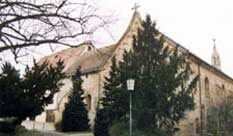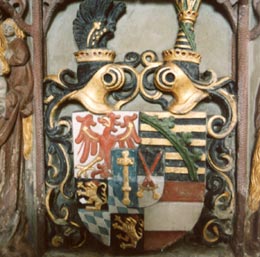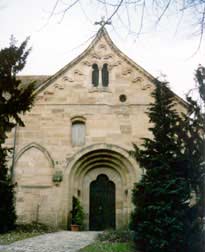|
|
 |
 |
|
|
|
|
|
|
 Heilsbronn Heilsbronn
Cistercian Monastery and Nobleman’s Grave I |
|
|
|
|
|
|
|
In this area the dioceses of Bamberg, Eichstaett and Wuerzburg bordered on one another, and in the nearby city of Spalt also the diocese of Regensburg had manorial interests. Finally the interests of imperial castle Nuernberg left its mark on that "dicey” situation, too. And in this tense atmosphere bishop Otto of Bamberg, who became famous as so-called "Apostle of Pomerania”, founded an Episcopal monastery here in 1132. In the year 1140 that monastery was occupied by Cistercian monks and then developed into one of the most influential and most prosperous monasteries of the Cistercian Order in the Middle Ages.
 |
|

The minster, which was constructed as a Romanesque basilica (strictly Hirsau style) at first, is to be regarded as "the oldest Cistercian church in the whole German language and cultural area, which remained essentially preserved”.  |
|
|
|
|

|
|
|
|
Local History of Heilsbronn |
|
Towards the end of the first millennium AD probably the first Franconian settlers settled down in the south-east of the so-called Rangau area. They called their village "Haholdesbrunn”, which was a kind of reference to the name of their lord of the manor.
In 1587 the first German school was founded in Heilsbronn.
During Thirty Years’ War the small village was attacked and plundered by mercenary hordes several times. Troops of famous general Tilly for instance behaved as desecrators of a grave and grave robbers when they "visited” the village.  |
|







